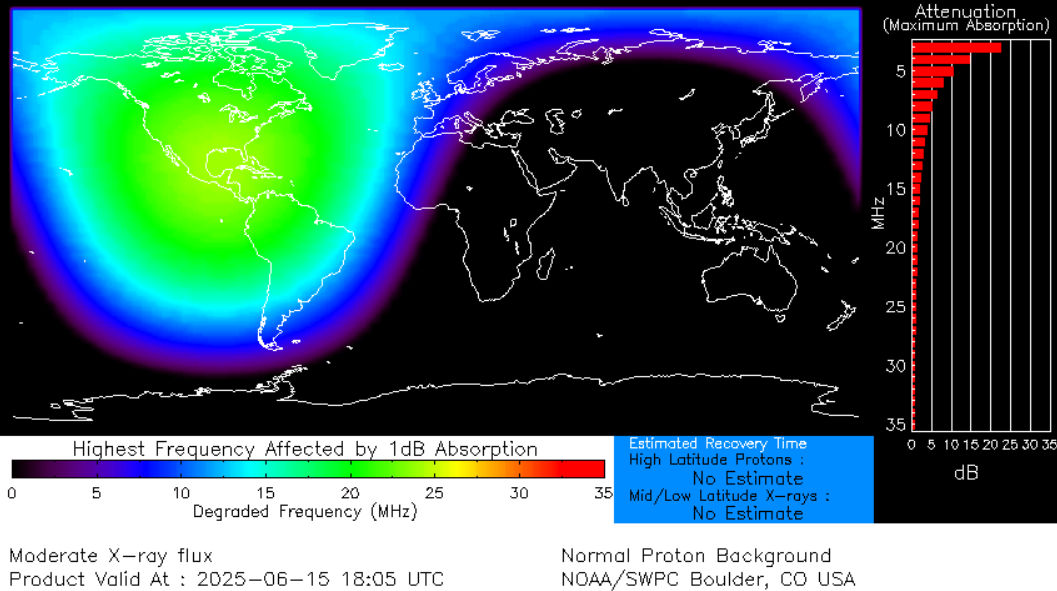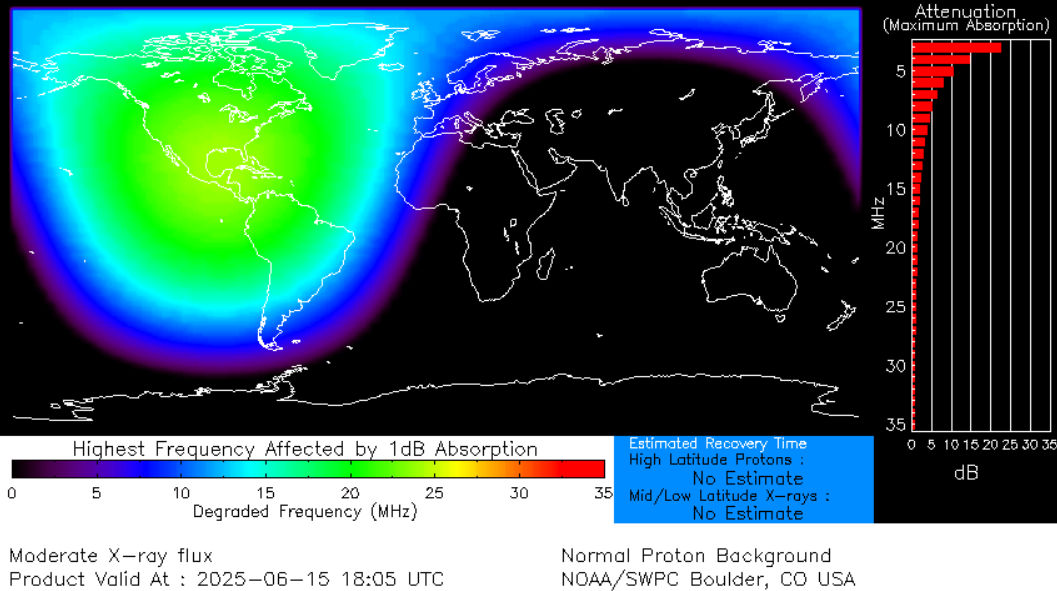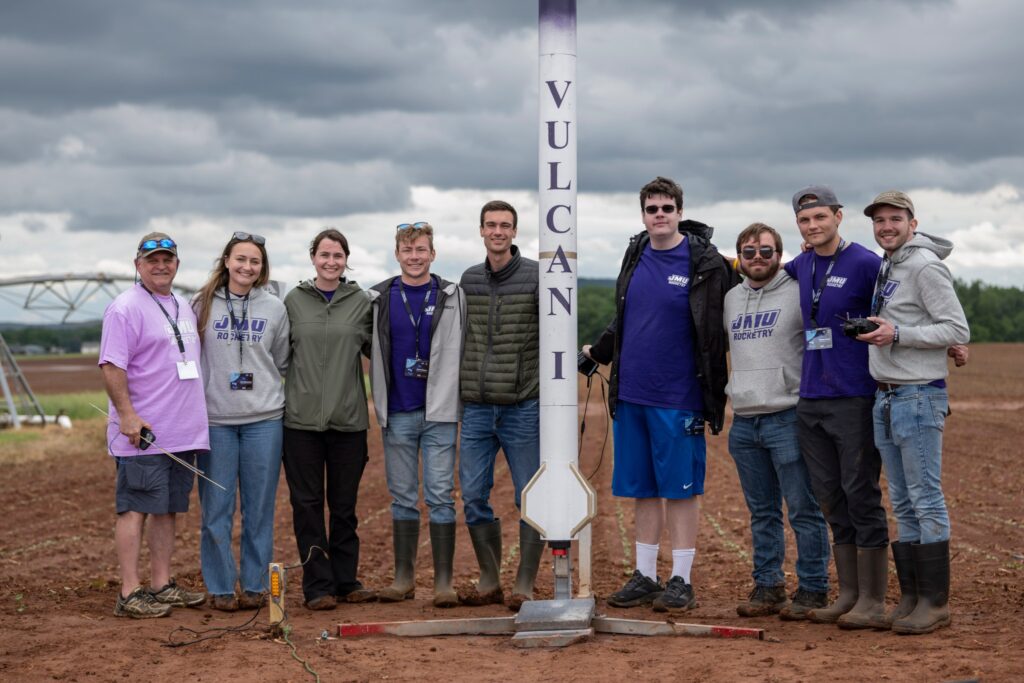An Earth-facing sunspot has turned into a prolific flare factory, firing off multiple powerful M-class solar flares in less than 24 hours, along with several minor C-class eruptions.
The most intense of these solar flares erupted on June 15, peaking at 2:25 p.m. EDT (1825 GMT) and registering as an M8.46-class — just shy of the X-class category, the most powerful type of solar flare. This eruption also unleashed a coronal mass ejection (CME) — a massive plume of solar plasma and magnetic field — now partially headed toward Earth. Forecasts suggest the CME’s flank could strike on June 18, according to Spaceweather.com.
If the CME does reach Earth, space weather forecasters say we could see minor (G1-class) geomagnetic storm conditions, potentially sparking northern lights as far south as northern Michigan and Maine.
What are solar flares?
Solar flares are caused when magnetic energy builds up in the sun’s atmosphere and is released in an intense burst of electromagnetic radiation.
They are categorized by size into lettered groups according to strength:
- X-class: The strongest
- M-class: 10 times weaker than X
- C, B and A-class: Progressively weaker, with A-class flares typically having no noticeable effect on Earth.
Within each class, a numerical value indicates the flare’s relative strength. The June 15 flare came in at M8.46, making it a near X-class event.
Radio blackouts across North America

Because flare radiation travels at light speed, it hits Earth in just over eight minutes. When it arrives, it ionizes the upper atmosphere (specifically the thermosphere), which can disrupt shortwave radio communication on the sunlit side of the planet.
During the M8.46 event, North America was directly facing the sun, making it the prime target for the resulting shortwave radio blackouts.
What’s next?
The sunspot region behind this activity isn’t slowing down. It unleashed another M6.4 flare early on June 16 at 5:30 a.m. EDT (0930 GMT) and remains in an Earth-facing position.
More solar flares — and possibly more CMEs — could erupt in the coming days. If they do, we may be treated to more northern lights displays as our planet remains in the strike zone of this highly active region.
Keep up to date with the latest aurora forecasts with our aurora forecast live blog and for the latest geomagnetic activity breakdown, check out NOAA’s 3-day forecast.



